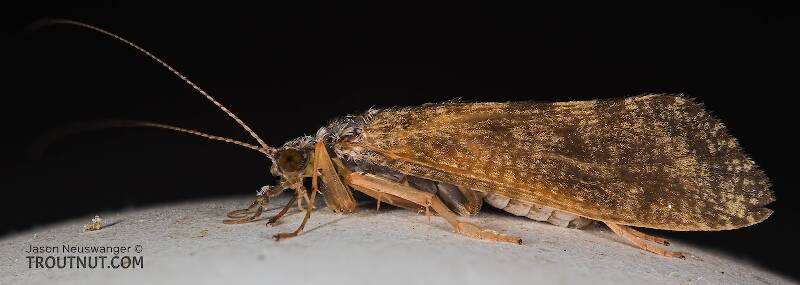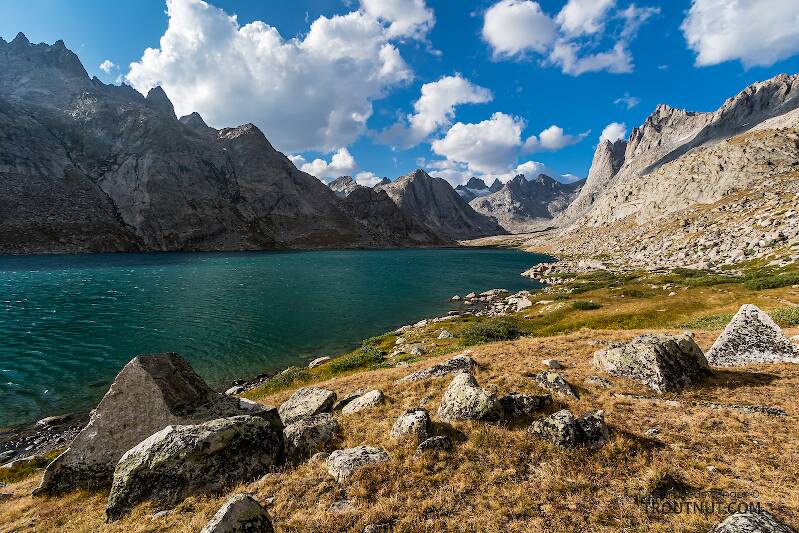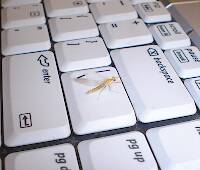
Hex Mayflies
Hexagenia limbata
The famous nocturnal Hex hatch of the Midwest (and a few other lucky locations) stirs to the surface mythically large brown trout that only touch streamers for the rest of the year.
Featured on the forum


Troutnut is a project started in 2003 by salmonid ecologist Jason "Troutnut" Neuswanger to help anglers and
fly tyers unabashedly embrace the entomological side of the sport. Learn more about Troutnut or
support the project for an enhanced experience here.
Troutnut on Jul 3, 2006July 3rd, 2006, 5:36 am EDT
Two quite recent books have really caught my eye. They are not repeats of the old classics, but they introduce dramatically different new patterns making tasteful and practical use of new synthetic materials and careful study of the natural insects.
1. Spinners & Cripples by Kelly Galloup
This 2001 book presents outstanding new imitations for -- you guessed it -- spinners and cripples. They address two major problems I dislike in other patterns.
The first problem is that the bodies are straight. Real mayfly bodies are very flexible and they are frequently bent as they float along the surface. The obvious solution is to simply bend the hook shank before tying, but this creates balance and line twist problems. Galloup presents patterns designed to cast well on bent hooks.
The second problem is the "triangular" profile of spinner wings tied from a single lump of fibers across the shank. They look unnatural and they tend to flop back with usage. Galloup presents a pattern (the "Ellis Triple Wing") which creates a sturdy, natural-looking profile.
I have been too busy with this site to tie many of the patterns in this books, but I have tied and used some of Galloup's dries. I like them so much that, with the exception of a couple compara-spinners, all my other spinner patterns are sitting in a tupperware container somewhere under some old laundry in a closet.
2. Fly-Fishing Pressured Water by Lloyd Gonzales.
This brand new title is a must-have book for serious hatch-matching fly anglers. It's the first book I've seen which introduces several useful new techniques not found in the comprehensive Fly Tier's Benchside Reference. It also introduces entirely new fly designs.
The flies require a fair amount of skill to tie, but they're not beyond most serious hobbyists. And they are beautifully realistic and lifelike imitations of the naturals. He writes about realism on page 15:
I completely agree with this philosophy. In your first flip through the book you'll fall in love with his fly patterns, many of which look to both human and aquatic eyes very much like the real thing, yet are constructed of lifelike and durable materials.
1. Spinners & Cripples by Kelly Galloup
This 2001 book presents outstanding new imitations for -- you guessed it -- spinners and cripples. They address two major problems I dislike in other patterns.
The first problem is that the bodies are straight. Real mayfly bodies are very flexible and they are frequently bent as they float along the surface. The obvious solution is to simply bend the hook shank before tying, but this creates balance and line twist problems. Galloup presents patterns designed to cast well on bent hooks.
The second problem is the "triangular" profile of spinner wings tied from a single lump of fibers across the shank. They look unnatural and they tend to flop back with usage. Galloup presents a pattern (the "Ellis Triple Wing") which creates a sturdy, natural-looking profile.
I have been too busy with this site to tie many of the patterns in this books, but I have tied and used some of Galloup's dries. I like them so much that, with the exception of a couple compara-spinners, all my other spinner patterns are sitting in a tupperware container somewhere under some old laundry in a closet.
2. Fly-Fishing Pressured Water by Lloyd Gonzales.
This brand new title is a must-have book for serious hatch-matching fly anglers. It's the first book I've seen which introduces several useful new techniques not found in the comprehensive Fly Tier's Benchside Reference. It also introduces entirely new fly designs.
The flies require a fair amount of skill to tie, but they're not beyond most serious hobbyists. And they are beautifully realistic and lifelike imitations of the naturals. He writes about realism on page 15:
Realistic imitation is often maligned in fly-fishing literature, with the detractors leveling the incomprehensible accusation that such flies are poor fish-catchers because they are too realistic. That is not possible, and what they really mean is that the materials used to achieve a realistic appearance are often stiff and life-less, producing a fly that does not move or drift in a convincing fashion--in practical terms, such flies are not realistic enough.
I completely agree with this philosophy. In your first flip through the book you'll fall in love with his fly patterns, many of which look to both human and aquatic eyes very much like the real thing, yet are constructed of lifelike and durable materials.
Jason Neuswanger, Ph.D.
Troutnut and salmonid ecologist
Troutnut and salmonid ecologist
JoeT on Aug 6, 2006August 6th, 2006, 11:20 am EDT
Wow, you have two of my favorites there. Here I thought I was the only one to own and read those two. I actually bought the lloyd gonsales book twice, one for a fly tier friend who was recovering from neck surgery this past winter, and one for myself.
I'd also have to add Tying Emergers by Leeson & Schollmeyer. There are tons of patterns coupled with step by step photos on every fly. I'm constantly refering back to this book to get tying ideas.
I'd also have to add Tying Emergers by Leeson & Schollmeyer. There are tons of patterns coupled with step by step photos on every fly. I'm constantly refering back to this book to get tying ideas.
Troutnut on Aug 18, 2006August 18th, 2006, 3:07 pm EDT
What's the story with the hike?
Jason Neuswanger, Ph.D.
Troutnut and salmonid ecologist
Troutnut and salmonid ecologist
Quick Reply
Related Discussions
Topic
Replies
Last Reply
Make your own fly Reel and other new classes at the CFFCM Arts of the Agnler Show
In General Discussion by Flymom
In General Discussion by Flymom
0
Oct 1, 2009
by Flymom
by Flymom
6
Mar 19, 2012
by Entoman
by Entoman
Invitation to the 30th Slovenian Open Fly Tying Championship 2017
In General Discussion by Lucky_luke
In General Discussion by Lucky_luke
0
Jan 5, 2017
by Lucky_luke
by Lucky_luke
Invitation to the 32nd Slovenian Open Fly Tying Championship 2019
In General Discussion by Lucky_luke
In General Discussion by Lucky_luke
0
Jan 13, 2019
by Lucky_luke
by Lucky_luke
Invitation to the 33rd Slovenian Open Fly Tying Championship 2020
In General Discussion by Lucky_luke
In General Discussion by Lucky_luke
0
Jan 17, 2020
by Lucky_luke
by Lucky_luke
Invitation to the 27th Slovenian Open Fly Tying Championship 2014
In General Discussion by Lucky_luke
In General Discussion by Lucky_luke
0
Nov 25, 2013
by Lucky_luke
by Lucky_luke



